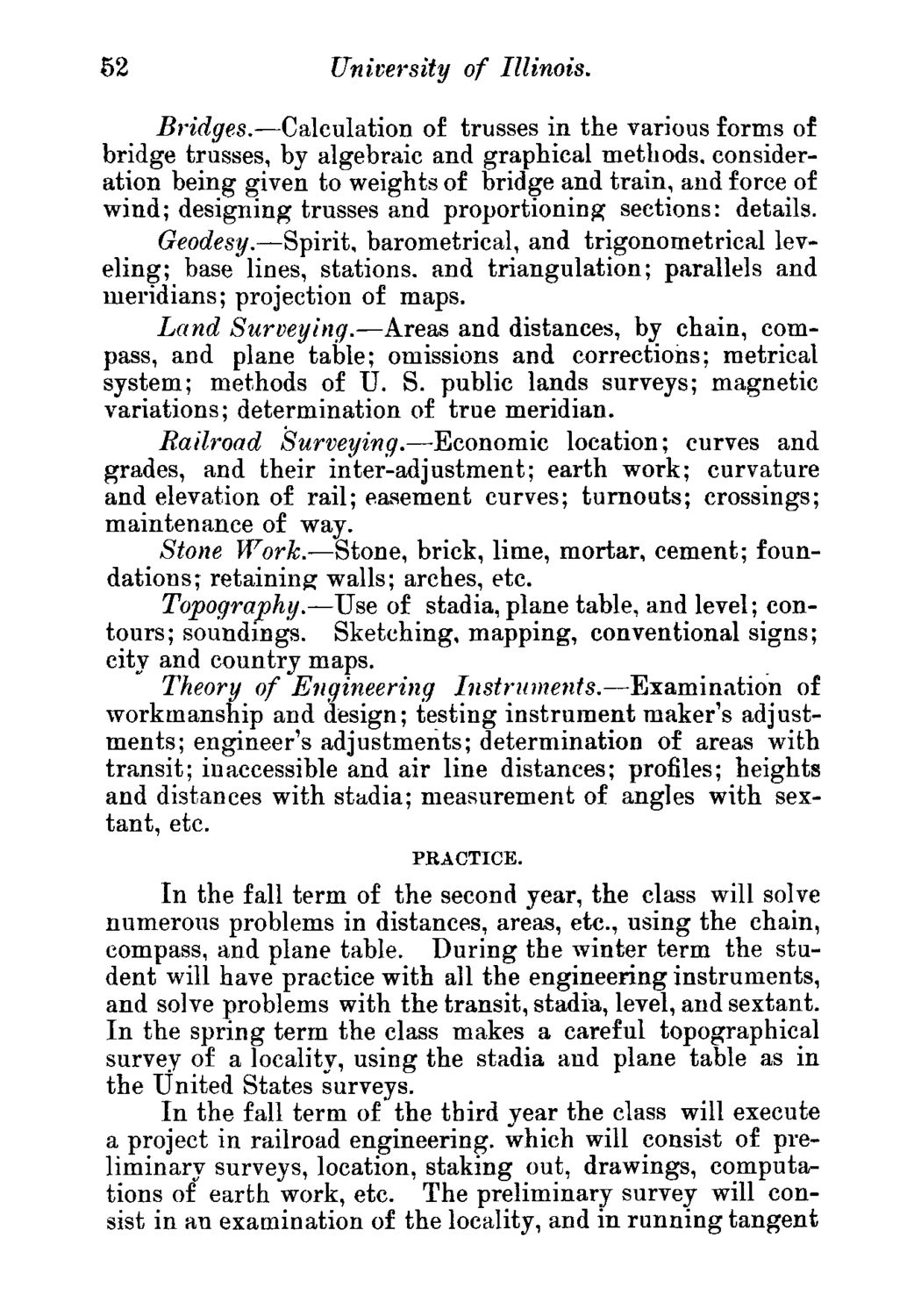| |
| |
Caption: Course Catalog - 1886-1887
This is a reduced-resolution page image for fast online browsing.

EXTRACTED TEXT FROM PAGE:
52 University of Illinois. Bridges.—Calculation of trusses in the various forms of bridge trusses, by algebraic and graphical methods, consideration being given to weights of bridge and train, and force of wind; designing trusses and proportioning sections: details. Geodesy.—Spirit, barometrical, and trigonometrical leveling; base lines, stations, and triangulation; parallels and meridians; projection of maps. Land Surveying.—Areas and distances, by chain, compass, and plane table; omissions and corrections; metrical system; methods of U. S. public lands surveys; magnetic variations; determination of true meridian. Railroad Surveying.—Economic location; curves and grades, and their inter-adjustment; earth work; curvature and elevation of rail; easement curves; turnouts; crossings; maintenance of way. Stone Work.—Stone, brick, lime, mortar, cement; foundations; retaining walls; arches, etc. Topography.—Use of stadia, plane table, and level; contours; soundings. Sketching, mapping, conventional signs; city and country maps. Theory of Engineering Instruments.—Examination of workmanship and design; testing instrument maker's adjustments; engineer's adjustments; determination of areas with transit; inaccessible and air line distances; profiles; heights and distances with stadia; measurement of angles with sextant, etc. PRACTICE. In the fall term of the second year, the class will solve numerous problems in distances, areas, etc., using the chain, compass, and plane table. During the winter term the student will have practice with all the engineering instruments, and solve problems with the transit, stadia, level, and sextant. In the spring term the class makes a careful topographical survey of a locality, using the stadia and plane table as in the United States surveys. In the fall term of the third year the class will execute a project in railroad engineering, which will consist of preliminary surveys, location, staking out, drawings, computations of earth work, etc. The preliminary survey will consist in an examination of the locality, and in running tangent
| |